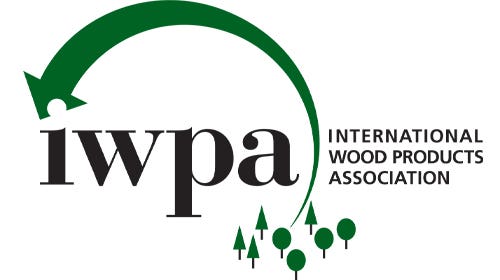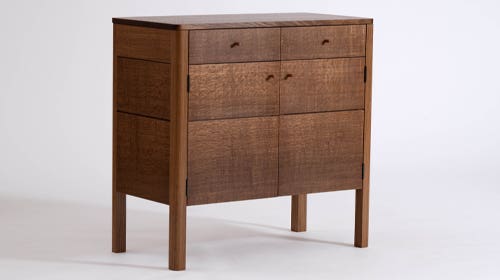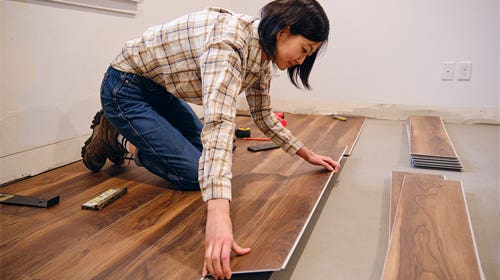Peru has an alternative for walnut users
Furniture makers voice some common complaints about working with Eastern black walnut. The boards, they say, aren’t wide enough; there’s too much sapwood, too many knots, and the grading rules…
Furniture makers voice some common complaints about working with Eastern black walnut.
The boards, they say, aren’t wide enough; there’s too much sapwood, too many knots, and the grading rules aren’t strictly adhered to. Dealers respond by saying the trees simply don’t grow the way the buyers might like them to.
Well, for those unhappy with the quality of domestic stock, there is Peruvian walnut to consider.
“Peruvian walnut is mostly clear,” says Jim Reader of Downes and Reader Hardwood Co., a retail and wholesale dealer in Stoughton, Mass. “If you buy Select & Better, the board is going to be graded like mahogany or another tropical species. The only downside is you will have an occasional silver streak, but that can be stained along with the rest of the board. With the domestic walnut in an FAS grade, you could still have a fair amount of knots in it or sapwood.”
Peruvian walnut (Juglans neotropica), also known as nogal in Peru, has a rich, dark-brown color similar to Eastern black walnut (Juglans nigra). But unlike its American counterpart, Peruvian walnut doesn’t have large amounts of cream-colored sapwood and is available in widths up to 14".
“Peruvian walnut is a little more consistent in color; it has more of a straighter grain to it,” says Shawn Morgan, of Advantage Trim & Lumber in Buffalo, N.Y., a retail and wholesale supplier. “If you look at American walnut, it has a little more irregularity in the grain, color variance, a little more sap. Peruvian walnut has a grain more like a mahogany where it’s easier to work with. It’s more consistent in color and softer, too.”
The wood has a coarse texture and a specific density of .65, slightly lower than domestic walnut. It has a high crushing strength, which makes it a popular species for flooring. Peruvian walnut is also used for fine furniture, some trim work, casework, musical instruments, turnings, carvings, and for gunstock when thicknesses greater than 4/4 are available.
“There have been a lot of people who have walked in here and said they’d like some American walnut,” says Matt Westmoreland, a wholesaler with World Timber Corp. in Hubert, N.C. “I’ll get down an American walnut stack and it’s prime grade, and there are always two or three knots in every board. Then I tell them to look at Peruvian walnut. It’s basically the same price per board foot and there are no defects to work around. Most of the time, they walk out of here with some of the Peruvian, and they try it out. You get a better yield out of it, and it definitely has that walnut look.”
The working properties of Peruvian walnut are impressive. The wood works easily with tools and machines, accepts nails and screws well and takes an exceptional stain. Because of its straight grain, tear-out is minimal. The only problem with Peruvian walnut is the drying process. It takes time, usually more than a year.
“It is prone to cell collapse, but if you’re planing it down below that, there’s no apparent damage to the board,” Reader says. “It is very difficult to dry. Depending on the thickness, it can take up to three years to dry.
“If you need something that is clear, and you can use something that has a mahogany grain with a walnut look, I would use it over the domestic walnut.”
Prices for Select & Better Peruvian walnut are slightly higher than Eastern black walnut, ranging from $5.55/bf to $6.75/bf. A wholesale price of $4,390 was quoted.
This article originally appeared in the February 2009 issue.







